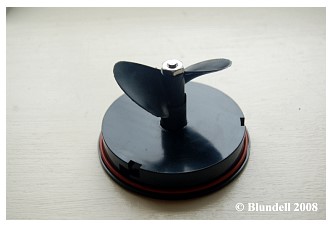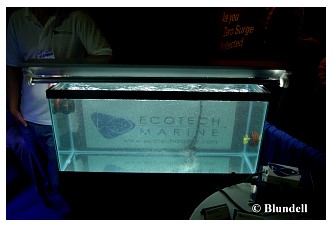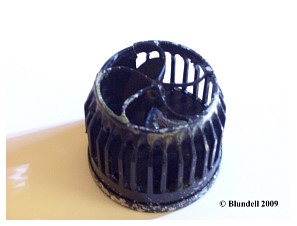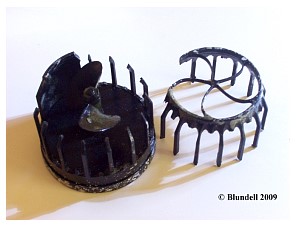 2009
2009  October 2009
October 2009  EcoTech Marine VorTech Cage Modifications
EcoTech Marine VorTech Cage Modifications
Stats:
 | Today | 4606 |
 | Yesterday | 19722 |
 | This week | 31188 |
 | Last week | 54704 |
 | This month | 55031 |
 | Last month | 217069 |
 | All days | 34068549 |
Your IP: 18.224.93.225
Mozilla 5.0,
Today: May 06, 2025
EcoTech Marine VorTech Cage Modifications
Background
I’ve been working with the EcoTech Marine VorTech pump for over a year now. I’ve burned them up, broken parts, run them dry and done all sorts of things you wouldn’t normally try on a $400 pump. Thankfully, it’s my job. Overall, I’d have to say I am very pleased and certainly impressed by these pumps. For people (like me) who are fascinated with water flow patterns, the use of sync/anti-sync technology is a playground of wonder. Additionally, the shear volume and direction of the flow creates many opportunities.
Disclaimer:
Please notice that all further information on this article is risky. It will certainly void any warranty you have on your pumps, and it could permanently damage them.
Did you read that warning I just posted? That is basically what I was told by EcoTech’s Tim Marks. For most aquarists that would be the “do not cross” warning, preventing them from making any modifications. But the “Aquatic & Terrestrial Research Team” is here to push the limits. And so we did!
Cage Modifications
When I first saw the VorTech in action at MACNA 2005 in Washington, DC, it was running without the cage. The pump was operating at slow speeds in the demo tank, which was obviously for demo purposes only. But I thought, “What if you could open up the cage on a VorTech?” (Please note that for VorTech pumps the cage is referred to as a “nozzle.”) The “opening” of the cage greatly enhances its flow patterns. I’ve been testing that for quite some time now (follow up article to come), but at what cost?
 |
 |
Removable Cage Modification
I started playing with removable cages a few months ago. I wasn’t going to write anything about it until I had six months of clear usage. Well, it has only been three months, but I feel comfortable in stating this - removable cage modifications are AWESOME!
Basically, the owner cuts and removes part of the cage (I removed 50%) as one solid piece. This allows easy re-attachment if so desired. By cutting off half of the cage, you can open up the flow of the pump. If you decide you don’t like it, a couple of little drops of super glue, and it is back to normal.
Purpose of the Cage
The cage itself has one major function - to keep things out of the pump. So, it stands to reason that you wouldn’t want to remove any of this for fear of sucking in a fish. However, I have not had any increased problems with this modification. In fact, I’ve run these pumps on tanks with a dozen damsels (small fish), a dozen tangs (big fish) and all sorts of fish in between. I have not had one instance of seeing a fish go into a modified cage. On the contrary the only fish that I know of which is routinely reported to “get stuck” on these pumps are Moorish Idols (Zanclus cornutus). I can say with certainty that these fish are quite likely to get stuck by VorTech pumps. But I have only seen this happen on non-modified pumps.
Directions
There isn’t a set plan here. You can do this anyway you like. For me, the best removal plan I’ve come up with includes cutting every other screen bar. This is done by cutting the top of a screen bar, then the bottom of the next, then the top of the next, then the bottom, and so forth, all around the cage (nozzle). This may sound confusing, but it is simple when looking at the pictures. I also remove the entire front-end screen. Please see the pictures for an example of how the cage is cut and removed. You can also see how it could easily be reattached.
 |
 |
The Pros
This modification can greatly open the flow on the pump. I’m having trouble calculating the flow rate, but it is certainly impressive. In tanks where algae frequently grows on the cage (nozzle), it is a great blessing to have a much bigger opening. The flow’s wide spread, and greater draw of water into the pump are hugely beneficial to me.
 |
 |
The Cons
I was heavily warned (and now you are as well) that modifying the nozzle will cause the pump to run faster and overheat. It certainly may still happen. I have been running four of these pumps on short pulse, at the highest speed setting, for three months now. They run 24 hours per day. So far, I have not had any overheating problems. I have, however, burned up four sets of drive shafts and ceramic bearings. I fully believe that the wear on these parts is due entirely to my modifications. After experiencing “slipping” of the wet sides, I looked into sources of error. Knowing the incredible customer service found at EcoTech, I gave them a call. I was told by EcoTech that my problem was a wear between drive shafts and bearings. I had trouble believing that because I cannot see any wear at all on those pieces. With a new set in one hand, and the used set in the other, I can not tell them apart. Once again, Tim Marks shows his knowledge of his products as he was certain that was my problem. I replaced the pieces, and Tim was correct as it fixed every pump.
Conclusion
This is a little tricky. To me, it is a no-brainer to do this modification. I am “modding” out every VorTech I have. The increased flow, the looks, and the pattern of dispersal, make the increased wear on its bearings well worth the cost. Even if I have to buy replacement bearings every few months, it will be worth it to me. This modification has many benefits, and if need be, I could always re-attach the rest of the nozzle. But the reason this conclusion is tricky is because of my responsibility as an author to the readers. It is certainly still possible that down the road this modification will burn up pumps, and leave my readers with a $400 paper weight. Increased wear on parts, voiding warranties, and overheating problems all exist with this modification. At the time of this writing I only have three months usage on four pumps, but for me, that was enough experience to comfortably write this.



